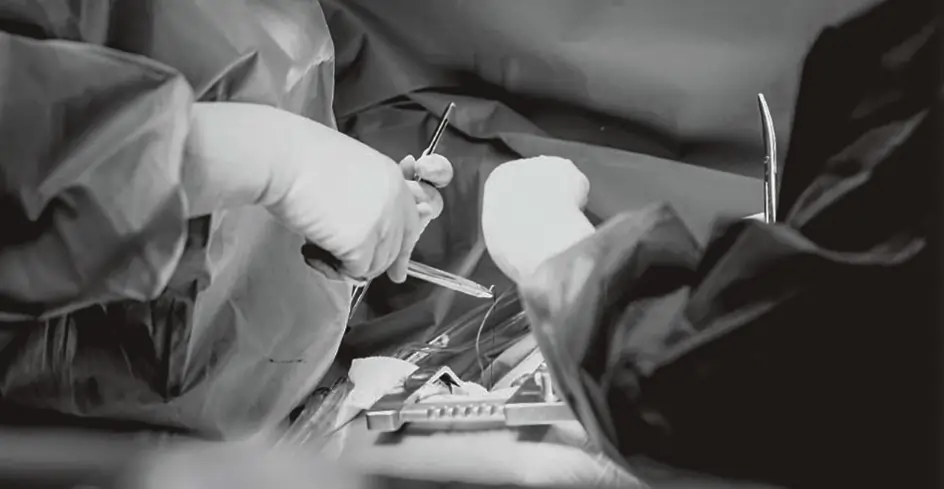Journal
Comprehensive Guide to Facial Contouring and Buccal Fat Removal
2024-06-05
Facial Contouring

Facial Bone Contouring Techniques
Facial bone contouring is a set of procedures aimed at correcting asymmetrical or disproportionate facial bones to achieve a more balanced and aesthetically pleasing look. These surgeries involve the cheekbones, jawbones, and other facial bones.
Cheekbone and Jawbone Surgery
Cheekbone Reduction
This surgery involves cutting and repositioning the cheekbones to reduce their size and prominence. This technique can significantly impact the facial profile, creating a softer and more harmonious appearance. The procedure is meticulously planned to ensure the incisions and bone adjustments result in a natural look that complements the patient's overall facial structure. For more information: click here
Jaw Reduction
This involves reshaping the lower jawbone to create a more balanced appearance. Jaw reduction surgery can address issues such as a prominent or square jawline, which can often be a source of concern for individuals seeking a more delicate or refined facial structure. The process typically involves removing portions of the jawbone and reshaping it to achieve the desired contour. For more information: click here
Surgical Methods and Materials
Small titanium screws are often used to secure the bones in their new positions. These screws are safe and durable, providing the necessary support for the bones as they heal. In some cases, absorbable screws that dissolve over time can also be used, which eliminates the need for a second procedure to remove them. The choice between titanium and absorbable screws depends on the specific needs and conditions of the patient, as well as the surgeon's preference.
Recovery
Recovery time varies by procedure. Cheekbone surgeries typically heal within three months, allowing patients to see the final results relatively quickly. Jawbone surgeries may take longer to heal due to the thicker and more robust nature of the bone, with full recovery potentially extending up to six months or more. During the recovery period, patients must follow their surgeon's post-operative care instructions meticulously to ensure successful healing and avoid complications such as infection or bone displacement.
Safety and Planning
It's crucial to approach these surgeries cautiously and choose experienced professionals. Though generally safe, these procedures carry risks like nerve damage, infection, or bleeding. Thorough consultations and careful planning are key to achieving desired results. Surgeons will often use advanced imaging techniques to plan the surgery, ensuring precision and minimizing risks. They will also discuss the patient's medical history, expectations, and any potential complications to ensure the patient is fully informed and prepared.
Consultation
Those considering these surgeries should consult qualified surgeons to understand the procedures, risks, and expected outcomes. Informed decisions lead to better satisfaction and safety. Surgeons may provide before-and-after photos of previous patients, discuss alternative treatments, and offer a detailed explanation of the surgical process, recovery timeline, and potential results.
Understanding and Addressing Sagging Skin Post-Surgery
Post-surgical sagging skin is a common concern, which can happen in two main ways: natural drooping of skin and fat, and skin stretching and losing elasticity over time.
Identifying Potential Sagging
Observe areas like the nasolabial folds (lines from the nose to the mouth), cheeks, and below the chin. Notice if these areas look puffier or more pronounced when you smile or talk. Prominent nasolabial folds or a fuller area below the chin can indicate a tendency for sagging. These observations can help patients and surgeons anticipate the potential for post-surgical sagging and plan accordingly.
Role of Facial Muscles
Facial muscles can pull the skin in different directions, contributing to sagging. People with a natural tendency for their skin to sag due to muscle movement and skin elasticity should be particularly mindful. Understanding the interplay between muscle movement and skin elasticity is crucial in planning effective surgical and non-surgical interventions.
Preventive Measures
Combining bone adjustment with skin-tightening techniques might be necessary to prevent sagging. Techniques such as laser therapy, radiofrequency treatments, or surgical lifts can be used in conjunction with bone contouring to enhance the overall results and maintain a youthful appearance. Skin with deep nasolabial folds or loose skin around the chin should be approached with caution, and comprehensive treatment plans should be developed to address all contributing factors.
Impact of Treatments
Treatments like Botox or fillers can affect skin elasticity. Botox may weaken facial muscles over time, leading to more sagging, while fillers can add volume but might not prevent sagging if underlying issues aren't addressed. A holistic approach that considers the skin, muscles, and bone structure will provide the most balanced and long-lasting results.
Combining Surgeries and Skin-Tightening Techniques
For patients prone to sagging, combining bone contouring with procedures such as facelifts or mini-lifts can provide enhanced results. These combined procedures address both the skeletal framework and the overlying soft tissues, ensuring a comprehensive approach to facial rejuvenation. Surgeons will evaluate the patient's skin quality, degree of sagging, and overall goals to determine the most effective combination of treatments.
Maxillofacial and Facial Contouring Surgeries: Differences and Applications
Maxillofacial surgery (orthognathic surgery) and facial contouring surgery serve different purposes and involve distinct techniques.
Purpose and Differences
Maxillofacial Surgery
Moves the jaw bones, often involving the teeth, to correct significant misalignments or structural issues. It's functional and corrects bite issues. This surgery can dramatically improve the patient's ability to chew, speak, and breathe, in addition to enhancing facial aesthetics. For more information: click here
Facial Contouring Surgery
Reshapes the bones of the face without moving the teeth, focusing on improving facial proportions for aesthetic enhancement. This type of surgery is more about refining the appearance rather than correcting functional problems.
Recovery and Effects
Maxillofacial Surgery
Longer recovery due to extensive bone cutting and repositioning, leading to more swelling and a prolonged healing period. Patients may need to follow a liquid or soft food diet initially and gradually transition to regular foods as healing progresses.
Facial Contouring Surgery
Shorter recovery time, allowing quicker return to normal activities. Patients typically experience less discomfort and fewer restrictions compared to jaw surgery.
Combining Surgeries
Combining both surgeries can be complex and is often approached sequentially. Address jaw alignment issues first, followed by facial contouring for optimal results. This staged approach allows the surgeon to focus on correcting functional issues before refining the facial aesthetics.
Case Examples
Severe misalignment requires jaw surgery and orthodontics first, followed by facial contouring if needed. This comprehensive approach ensures that both functional and aesthetic concerns are addressed.
Minor misalignment or aesthetic concerns might start with orthodontics, followed by facial contouring. This approach is less invasive and can still provide significant improvements in facial appearance.
Important Considerations
Understand the distinct purposes and outcomes of each surgery. Consult with specialists to determine the best approach based on individual needs. Surgeons will perform a thorough evaluation, including imaging studies and functional assessments, to develop a personalized treatment plan.

Buccal Fat Removal: Misunderstandings and Considerations
Buccal fat removal, or deep buccal fat removal, is often misunderstood and frequently overdone. This specific fat is located deep in the cheeks, from the cheekbone to the jaw, and plays a crucial role in facial fullness and contour.
Misunderstandings
Buccal fat is different from subcutaneous fat and should not be confused with fat near the mouth corners or under the lips. Understanding the anatomical differences between various fat deposits is essential for achieving desired results and avoiding unnecessary procedures.
Role and Importance
Buccal fat helps maintain facial volume, especially as we age. Removing it can lead to a hollow appearance over time, so the procedure should be approached with caution. Patients need to consider the long-term impact on their facial appearance and consult with experienced surgeons to make informed decisions.
Appropriate Candidates
Removing a small amount of buccal fat can benefit those with overly full faces. However, it is generally not recommended for individuals with already thin faces or hollow cheeks. Surgeons will assess the patient's facial structure, skin quality, and overall goals to determine the appropriateness of buccal fat removal.
Long-Term Effects
The misconception that buccal fat removal is needed for every fuller face is incorrect. Only a few specific cases benefit from this procedure, and long-term effects should be carefully considered. Inappropriate removal can lead to a prematurely aged appearance and may require corrective procedures in the future.
Comprehensive Facial Assessment
Before deciding on buccal fat removal, a comprehensive facial assessment is essential. Surgeons will evaluate the patient's overall facial structure, skin elasticity, and aging patterns to develop a holistic treatment plan that addresses all concerns.
Alternative Treatments
For individuals seeking facial slimming without removing buccal fat, alternative treatments such as facial liposuction, skin-tightening procedures, or non-surgical contouring methods can be considered. These options provide less invasive ways to achieve a slimmer facial appearance while preserving facial volume and avoiding the risks associated with buccal fat removal.
Conclusion
Facial contouring and buccal fat removal are complex procedures that require careful consideration and expertise. Properly understanding these procedures, their risks, and their long-term impacts is crucial for achieving the best aesthetic and functional outcomes. Always consult with qualified professionals to ensure safe and satisfactory results. By approaching these procedures with a thorough understanding and careful planning, patients can achieve their desired facial appearance while maintaining overall facial harmony and health.

Contact Us for an In-depth Free Consultation About Facial Contouring Surgery
If you are considering facial contouring surgery or any other procedures and would like to get more information, reach out to us by contacting us on the following:
Email: inquiry@docfinderkorea.org
WhatsApp:
+(82) 10-5825-8806 (EN/IND)
+(82) 10-5811-8806 (EN/РУC)
+(82) 10-4333-8806 (EN/繁/簡/粵)
Back


